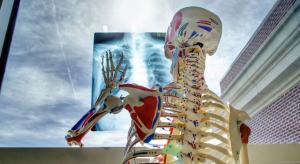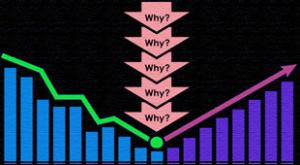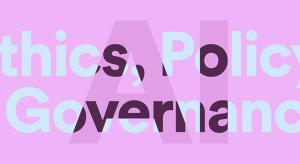All Features

Jon Speer
Believe it or not, paper is very expensive. Although the going rate for a ream of standard copy paper is only about 10 bucks, the expense of relying on paper for your medical device quality management system is downright outrageous.
Some medical device manufacturers have recognized how expensive…

Anne Trafton
After a patient has a heart attack or stroke, doctors often use risk models to help guide their treatment. These models can calculate a patient’s risk of dying based on factors such as the patient’s age, symptoms, and other characteristics.
While these models are useful in most cases, they do not…

Tom Taormina
In part one of this series, I said that I want to help my colleagues use their ISO 9001 implementation as a profit center and to turn risk-based thinking into risk avoidance. To do this I will share a set of tools that help evolve quality management into business management.
These tools include…

Kelvin Lee
Biopharmaceutical manufacturing uses living cells to produce therapies that treat diseases like cancer, diabetes, and autoimmune disorders. Manufacturing medicine using biology presents different challenges from the traditional chemical manufacturing processes that stamp out identical pressed pills…

Gleb Tsipursky
In the context of our increasingly disrupted, globalizing, and multicultural world, quality leaders greatly appreciate the security and comfort of clear-cut strategic plans for the future. After all, following our in-the-moment intuitions frequently leads to business disasters, and strategic plans…

William A. Levinson
The Automotive Industry Action Group’s (AIAG’s) and German Association of the Automotive Industry’s (VDA’s) new Failure Mode and Effects Analysis Handbook (AIAG, 2019) offers significant advances over FMEA as practiced 15 or 20 years ago.1 The publication is definitely worth buying because the new…

Michael Lueck
After the first crash, of Lion Air in Indonesia in October 2018, people blamed poor maintenance and insufficient pilot training. When a second airliner, an Ethiopian Air aircraft, crashed in March 2019, similarities quickly transpired. There was no apparent external influence such as poor weather.…

Anton Ovchinnikov
Left to their own devices, humans tend to fall prey to biases that make them poor decision makers. For instance, among other foibles, most purchasing managers routinely under-order. In fact, past research has shown that managers are typically 10 to 20 percent off the mark when it comes to ordering…

Miriam Boudreaux
If you are wondering whether your organization could benefit from formal root cause analysis (RCA) and corrective action training, read on to see if any of these issues are present in your day-to-day operations. RCA and corrective actions are some of the most useful tools for continual improvement…

Penelope B. Prime
The United States and China have reportedly reached a so-called phase one deal in their ongoing trade war.
While few details have been disclosed, the agreement principally seems to involve the United States calling off a new round of tariffs that were slated to take effect on Dec. 15, 2019, and…

Nathan Furr
Few companies and CEOs have attracted as much praise, derision, skepticism, and enthusiasm as Telsa Motors and its founder Elon Musk. Having interviewed Musk and the Tesla leadership as part of my research, one of the questions I’m asked most frequently is: How can you make sense of Tesla’s wild…

Dirk Dusharme @ Quality Digest
What a year.
No matter your job, your industry, or your political beliefs, this year has been a heck of a ride. The (still ongoing) trade war with China, manufacturing gains (and losses), the 737 MAX, Hong Kong riots, North Korea, Brexit, impeachment. What a mixed bag of ups and downs that has…

As usual with Quality Digest’s diverse audience, this year’s top stories covered a wide range of topics applicable to quality professionals. From hardware to software, from standards to risk management, from China trade to FDA regulations. It’s always fun to see what readers gravitate to, and this…

Anat Amit-Eyal
Eric, a 40-something married father of three, runs a successful startup. Given his demanding career, he and his wife decided she would be a stay-at-home mum. Eric believed the attention he devoted to his family was adequate, and that he had fully harmonized his work as CEO and life as a family man…

Michael Millenson
In late November 1999, a TV producer called me about an alarming report that 44,000 to 98,000 Americans were being killed each year by preventable errors in hospitals, and another 1 million were being injured. Could that be true? Based on my research, I replied, the estimate seemed low.
The “To…

Davis Balestracci
During the late 1970s, quality began to evolve from its historically Neanderthal, passive inspection approach to its current Cro-Magnon state, where its more proactive, project-based approach is bolted on to the operational status quo. Joseph Juran was a pioneer in such efforts. Various subsequent…

Clifton B. Parker
An underlying theme emerged from the Stanford Institute for Human-Centered Artificial Intelligence’s fall conference: Artificial intelligence (AI) must be truly beneficial for humanity and not undermine people in a cold calculus of efficiency.
Titled “AI Ethics, Policy, and Governance,” the event…

Gleb Tsipursky
When was the last time you as a quality professional saw a major failure in implementing decisions? What about in project or process management? Such disasters can have devastating consequences for high-flying careers and successful companies. Yet they happen all too often, with little effort taken…

David Hart
Climate plans are the order of the day in the presidential primary campaign because carbon pollution is a global threat of unique proportions. But it’s worth asking whether candidates’ plans are based in the reality of the climate, the economy, and the election.
All three dimensions must come…

Heather Thompson
Software as a medical device (SaMD) is a growing sector in medical device technology. Through the use of artificial intelligence and machine learning, SaMD has the power to influence health on a global scale as well as allow for personalization in medicine and life-saving therapies.
Medical device…

Matt Kunkel
Third-party vendors are increasingly working with their own third parties (fourth and fifth parties), spreading your data across many different vendors. This can make your company an easy target for cybersecurity threats, especially if your organization is a hospital or part of the healthcare…

ISO
As artificial intelligence (AI) becomes increasingly ubiquitous in various industry sectors, establishing a common terminology for AI and examining its various applications is more important than ever. In the international standardization arena, much work is being undertaken by ISO/IEC’s joint…

Chad Kymal
With the advent of the internet, cloud, and electronic workflows, what is the future of documented management systems? Do we continue with a structure of quality manual, processes, work instructions, and forms and checklists? How do we imagine the future of documented management systems?
For…

Dileep Thatte
According to information from the Centers for Disease Control and Prevention (CDC), every year 48 million people in the United States get sick, 128,000 are hospitalized, and 3,000 die from foodborne diseases. That means one in six people in the United States get sick from contaminated food every 12…

Boris Liedtke
In May 2019, a California jury found Monsanto’s weed killer, Roundup, to be a “substantial factor” in the cancer suffered by a couple and ordered the U.S. agrochemical company to pay them $2 billion in damages. This was the third and largest verdict against Monsanto, now owned by German…